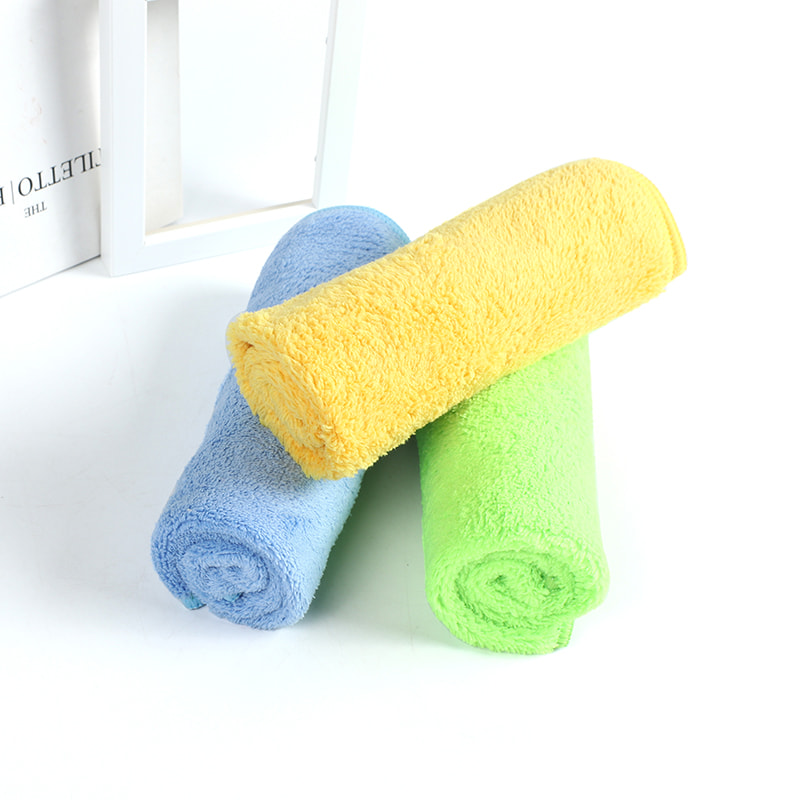We are a national high-tech enterprise. At present, there are many kinds of self-woven and cooperatively processed fabrics, including microfiber warp-knitted towel cloth, weft-knitted towel cloth, coral fleece, etc.
There are antibacterial treatments available for bathroom cleaning towels. These treatments often involve incorporating antimicrobial agents into the fabric during the manufacturing process. These agents can include substances like silver nanoparticles or certain chemical compounds that inhibit the growth of bacteria, fungi, and other microorganisms.
In real-world applications, the effectiveness of antibacterial treatments on bathroom cleaning towels can vary based on several factors:
1.Type of Antimicrobial Agent:
Different antimicrobial agents vary in their effectiveness against specific types of microorganisms. Silver nanoparticles, for instance, possess broad-spectrum antimicrobial properties, inhibiting the growth of various bacteria and fungi. Chemical compounds like quaternary ammonium compounds are effective against a wide range of microbes. Professionals should choose towels treated with agents tailored to the specific microorganisms commonly found in bathroom environments.
2.Proper Usage:
Ensuring the towels are used correctly as per the manufacturer's guidelines is paramount. Professionals must follow recommended cleaning procedures, including appropriate detergents and washing temperatures. Overuse of harsh chemicals or improper cleaning methods can diminish the antibacterial properties of the towel, affecting its overall efficacy.
3.Duration of Effectiveness:
Antimicrobial treatments can degrade over time, especially with frequent washing. Professionals should be aware of the expected lifespan of the antibacterial treatment and replace towels when the efficacy diminishes. Regular monitoring and periodic testing can help assess the continued effectiveness of the treatment.
4.Environmental Conditions:
Environmental factors such as humidity and temperature can impact the performance of antibacterial treatments. High humidity might create conditions conducive to microbial growth, challenging the efficacy of the treatment. Similarly, extreme temperatures, especially in industrial laundering processes, can affect the stability of the antimicrobial agents. Professionals should be mindful of these factors when selecting towels for specific environments.
5.Microorganism Type:
Understanding the specific microorganisms prevalent in bathrooms is crucial. Different treatments target specific types of bacteria, viruses, or fungi. Professionals should choose towels with antimicrobial agents effective against the particular microorganisms they aim to combat. Regular assessments of the microbial environment can guide the selection process.
6.Compliance with Regulations:
It is imperative to comply with regulatory standards and guidelines governing antimicrobial products. Professionals should ensure that the antibacterial treatments used in towels meet industry-specific regulations and are certified by relevant authorities. Compliance ensures that the product not only works effectively but also adheres to safety and quality standards.
7.Cross-Contamination Prevention:
While antibacterial treatments can inhibit microbial growth on towels, professionals must also focus on preventing cross-contamination during cleaning processes. Proper sanitation of surfaces, tools, and hands, along with the correct use of towels, is essential. Training staff in hygiene protocols can significantly contribute to maintaining a clean and safe environment.
It's essential for consumers to choose bathroom cleaning towels with antibacterial treatments that are supported by scientific research and comply with relevant regulations. Regular testing and adherence to care instructions provided by manufacturers are also vital to ensure the continued effectiveness of antibacterial treatments in real-world applications.
Size: 38*38CM
Colour: Blue, yellow, green
Main classification: Car, home
Main ingredient: Polyester
Main ingredient content: 87% Polyester: 13% Nylon
Material: Superfine fiber
Yarn craft: Single yarn
Yarn specification: 150D
Craftsmanship: High density
Gram weight: 230GSM
Water absorption: Powerful

 English
English Espaol
Espaol русский
русский عربي
عربي 简体中文
简体中文

















